Close-Up On Rockypoint Stills
An Interview With Western Kentucky Still-Maker Christopher Kelley
By Richard Thomas
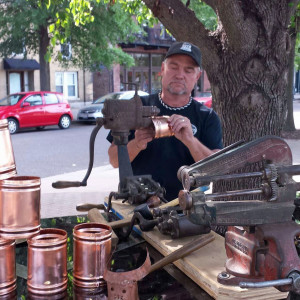
(Credit: Rockypoint Stills)
The “bourbon shortage” gets all the headlines these days, but one of the genuine shortages in the whiskey-making business, or indeed in the larger distilling industry, is in equipment. Since The Whiskey Reviewer’s early days the number of micro-distilleries operating or under construction in the United States has quadrupled, and consequently the words “waiting list” figure into just about every conversation I have with a still-builder.
All that demand means plenty of business for the new, small entrants into the distillation equipment trade, such as Western Kentucky’s Rockypoint Stills, started by Christopher Kelley. Also a moonshine and whiskey enthusiast, Kelley has turned his heritage and technical skills to still-building. His shop appeared in National Geographic Channel’s The Big Picture With Kal Penn: Eat This, and he already has plenty of copper in operation around America.
RT: Your start in fabricating stills began with doing some home distilling of your own, and you mentioned some “old family recipes.” Tell me a bit about those family roots in distilling, and how did your efforts turn out?
CK: People from isolated rural parts of the southeast are famous for their moonshine recipes. Generations upon generations have passed down family secrets to preserve their lifestyle. The Jones side of my family near Coldwater, Kentucky lived in an agricultural community that had ties to relatives who made their own alcohols. Whether or not the white dog was made to catch a buzz or made for medicinal purposes, there was an art to the production of these elixirs.
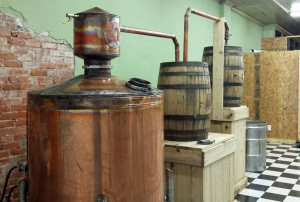
(Credit: Rockypoint Stills)
I had been drinking whiskey since fifteen, but my first taste of real moonshine was in 1980 at nineteen years old. My grandmother’s cousin was hanging around trying his best to paint the house, and while doing so he would rib me about girls or parties. They called Robert “the Painter Man,” and he always seemed to be a little tipsy. Finally, I asked what he had in his cooler! He told me it was “White Lightning!” Well, I had to check that out and asked to take a swig. Of course, one thing led to another and there we went. It wasn’t a week later and I was getting charred barrel shine for my college buddies.
From what I understand, the Coldwater, Kentucky recipe has been around for over a century. The grain bill consisted of 52% corn, 43% wheat and 5% malted barley. No sugar was added to this particular personal recipe passed down to me. No sugar means less production of alcohol, but far better flavor. After several personal experiments with many recipes, I was hooked, hooked on the moonshine and all its varieties.
My first efforts on distillation were not the greatest. Even with a good recipe, you need control over your fermentations and the heat of the still. In open air or barn conditions it is hard to control any of that.
Even if the moonshine was drinkable or even good, it was hard to reproduce the same product taste, aroma, and texture. My first experiments included stainless steel beer kegs with copper tops. The amount of heat required to bring the wash up to steam was ridiculous. I probably burnt the particulates of the wash. Without direction from my relatives on still-building, I was lost.
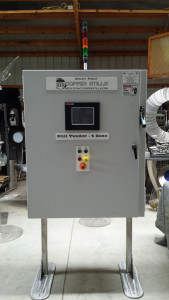
a mobile phone
(Credit: Rockypoint Stills)
RT: How did your background in HVAC, plumbing and electrical work translate into still-building?
CK: After a couple years screwing around in college, I decided it was best for me to go to the military. [I was] Navy-trained for the A-7 Corsair and -certified as an electronic technician, [and] it is advantageous for me to merge technology with the distillation process. By the end of the 1990’s, I educated myself further and certified as a master in electrical, plumbing, and mechanical construction.
My HVAC (heat, ventilation, and air conditioning) knowledge led me to believe I could build my own distillation devices and that’s where the still business got started. After hours and hours of searching and reading about moonshine, how it was made, and what designs perform the best to make each particular type of alcohol, I quickly found that the build to some of these old designs was more work than I anticipated.
These old timers were really good tinsmiths and had talent that was no longer passed down to the youngsters. My favorite tool to this day is my one hundred year old Pexto tinsmith crimping tool.
RT: I’ve been told before that welding with copper is a very different matter from welding with iron and steel. Have you found the same in your work? Can you explain that?
CK: Even though I had experience sweating copper in my HVAC background, I was quickly educated by the copper sheeting. The sheets have a way of telling you that they are not copper pipe. Surface area is everything when dealing with copper! The more surface area and thickness to the piece of copper the harder it will be to heat up.Copper dissipates heat so quickly you really have to put the heat to it. The window of perfectly bonding heat is so small that you are required to balance between the silver not sticking to the copper and the copper blowing out a hole.
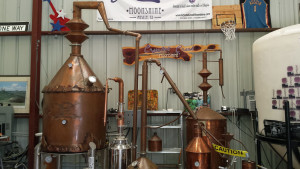
this time at Crystal Creek in Austin, Texas
(Credit: Rockypoint Stills)
The real advantage of having prior HVAC experience is not from sweating copper, but doing the calculations for heat exchange, copper tensile strengths, sizing equipment, and estimating pressure allowances. My welder, Justin Brooks, is great at TIG welding stainless steel connections to copper. TIG welding dissimilar metals with such a great amount of heat tolerance and heat dissipation it is probably the most challenging part of building quality distillers.
I cannot tell you how many welders have come up and told me they could build a still as good as ours! Every country bumpkin that ever held a Lincoln arc welder thinks they can weld copper to stainless steel. Well, I’ve got news for them: go try it.
Even the best TIG welders I have given the opportunity have failed. I’m not saying they cannot do it, just that they will not do well their first try. It took several hundreds of dollars’ worth of materials and several hours of practice with the proper equipment to train my welders. Dissimilar metals are very hard to weld and tend to lose strength if the correct methods are not employed. More often than not, the welds are brittle and crack or have pin holes due to bad preparation, type of weld, or type of rod used. TIG welding copper to copper is also challenging and takes time to tune in the welder.
RT: What was your most challenging still-building job?
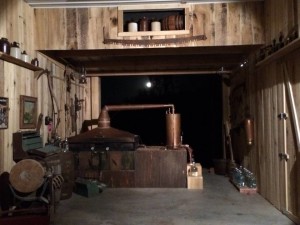
(Credit: Spencer Balentine)
CK: Our most challenging still building job to date is the Casey Jones design with patent by Arlon Casey Jones in Christian County, Kentucky. This wagon bed distiller is being built for the Silver Trail Distillery under the supervision of Jay Rogers, the head distiller.
What makes it so challenging is the rectangular design of the cape. The cape is the tapered part between the sides of the vessel and the neck. Most of my cans are cylindrical with a round cone shape, but this can isn’t even square. This can is five hundred gallons of rectangular copper glory! I had to make copper angle for side support and a framework for the cape above to take shape. This build is an open pot still with a custom Casey Jones cylindrical double walled condenser. The lyne arm is eight feet long and inclined upward from the head to the condenser. We approximate the still can alone will weigh 1,500 pounds when finished.
RT: As a whiskey fan yourself living in Western Kentucky, what are your go-to brands?
CK: My favorite part of making whiskey is drinking it while streaming right off the parrot. Bourbon is my new passion even though I have always liked [both] whisky and whiskey…. My go-to night cap for years was Wild Turkey, then Maker’s Mark. Four Roses is doing a good job with their product line today but I must say Pappy Van Winkle really opens my eyes.




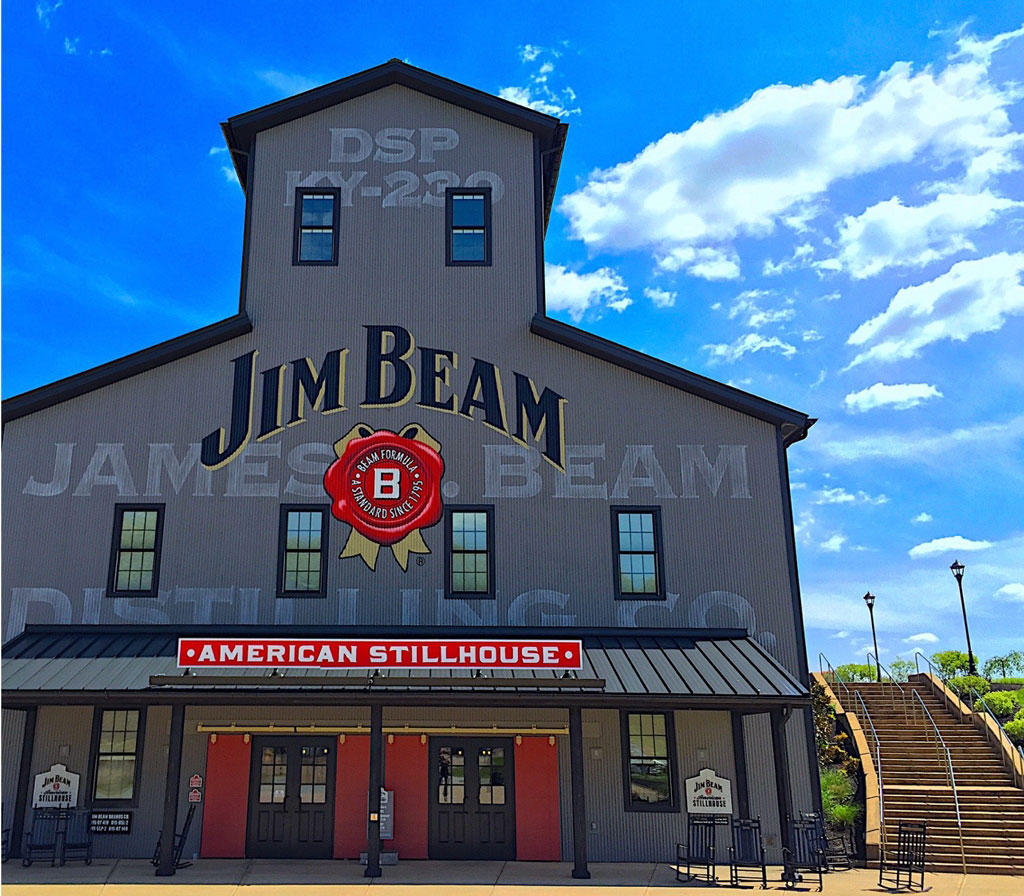
Thanks for your time and support, I was very pleased with the article. Hope to do more collaboration in the future and promote quality products for our community of distillers.
I loved the article. I don’t drink whiskey but then I may never had a good one. Very interesting.
Can we purchase a small home still. We live in Fritch, Texas
Had the pleasure of meeting Chris Kelly.
Good un